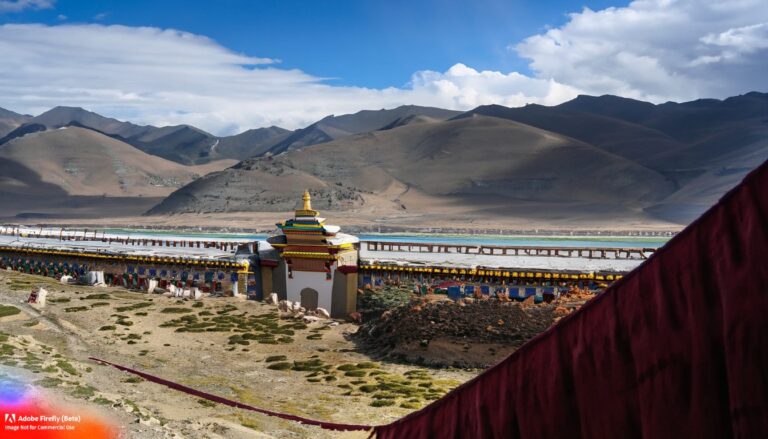
Tibet, known as the “Roof of the World,” possesses a diverse range of natural resources due to its unique geographical features and rich mineral deposits. The region is abundant in various resources that have significant economic and strategic importance. In this article, we will explore some of the key resources found in Tibet.
Minerals:
Tibet is known for its vast mineral wealth. The region has substantial reserves of copper, gold, lead, zinc, iron ore, lithium, and various other minerals. These mineral deposits are essential for industrial producion and have attracted attention from mining companies and investors.
Hydroelectric Power:
Tibet’s mountainous terrain and numerous rivers provide abundant hydroelectric power potential. The region has significant water resources that can be harnessed for generating clean energy. Several large-scale hydroelectric projects are underway, aiming to utilize Tibet’s rivers for electricity generation.

Water Resources:
Tibet is the source of several major rivers, including the Yangtze, Yellow River, Mekong, and Brahmaputra. These rivers supply water to millions of people downstream, supporting agriculture, industry, and ecosystems. Tibet’s glaciers also contribute to the region’s water resources, making it a vital watershed for Asia.
Pastoral Resources:
Tibet is known for its extensive grasslands, which are essential for pastoralism. The grasslands support livestock rearing, particularly of yaks and sheep, providing livelihoods for many Tibetans. Yak products such as meat, milk, and wool play a significant role in the region’s economy and traditional way of life.
Medicinal Plants:
Tibet’s high-altitude environment is home to a diverse range of medicinal plants. Traditional Tibetan medicine relies heavily on these plants for various remedies and treatments. Many of these medicinal plants have unique properties and are highly sought after in the pharmaceutical industry.

Tourism Potential:
Tibet’s unique culture, stunning landscapes, and spiritual heritage make it an attractive destination for tourists. The region’s resources include historical sites, monasteries, trekking routes, and natural attractions such as Mount Everest and Lake Namtso. The tourism industry has the potential to contribute significantly to Tibet’s economy.
It is important to note that the responsible and sustainable utilization of Tibet’s resources is a subject of debate and concern. The extraction of minerals, dam construction, and other development activities should be conducted with careful consideration of the environmental impact and the interests of local communities.
Summary
In conclusion, Tibet is endowed with various resources that hold significant economic, cultural, and strategic value. From mineral deposits to hydroelectric power, water resources, pastoralism, medicinal plants, and tourism potential, Tibet’s resources contribute to its unique identity and play a role in regional development. Balancing resource exploitation with environmental conservation and the welfare of local communities is crucial for ensuring the sustainable development of the region.






